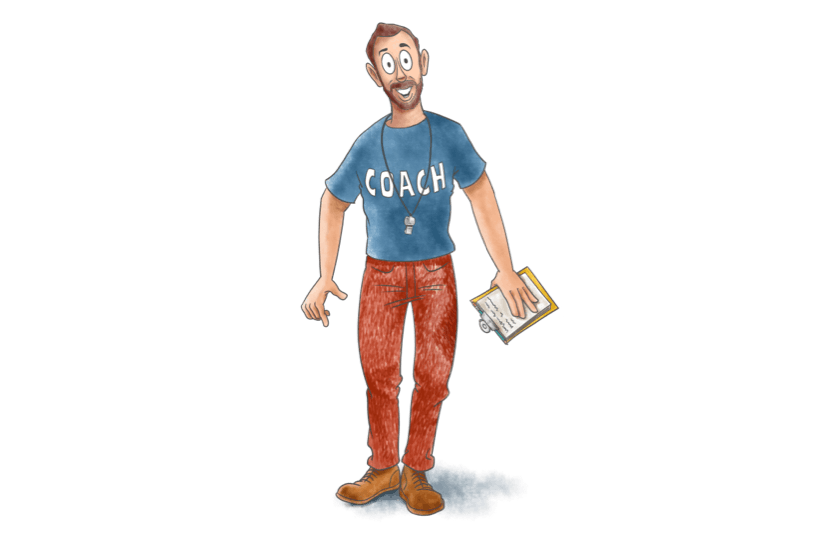
When practicing a skill or trying to achieve a specific level of expertise, being told to ‘put in the hard yards’ is pretty standard. What’s rarely thought about, however, is whether those ‘yards’ are actually hard?
Is the practice actually difficult at all, or is it just repetition alone, under the assumption that just doing it over and over is going to lead to improvement?
I mean sure, it might! But only up until the point where you feel comfortable with the level of difficulty. From then on, repetition is just going to waste time and cause unnecessary frustration when the curve of your improvement starts to flatten.
Every kind of practice is connected — whether you’re training for a marathon or working to perfect a sonata. All effective techniques work in exactly the same way: working out what our brain responds to, what it doesn’t, and using these results to inform the future course of the practice. (If only computers could do this for us… Oh wait.)
But think about the last time you were trying to hone in and perfect a skill. Let’s take the marathon example, for instance.
You want to start training for the run. So what do you do? Run, of course.
You run and run, every single day, up until the day of the marathon. Countless hours of effort into training. Blood, sweat and tears. You’re feeling confident and you’re sure you’re going to smash it.
But what if you come up short? Back to running, I suppose…As ‘prepared’ as you may have been, it’s more than likely that many of those hours would have been naive practice. Putting your headphones in, and heading out for a run.
This sort of practice can be deceiving, and make it frighteningly easy to slip into the comfort zone: a level that whilst satisfying and enjoyable, isn’t helping in the mastery of the skill. These automated abilities gradually deteriorate in the absence of efforts to improve them.
Within this zone, you’ve even managed to learn how to make mistakes in the same way — automatically.
I spoke a little about this kind of practice some weeks ago, when I shared my experience of the rude awakening I received upon entering China for the first time after having Mandarin lessons for six months…
In all honesty, I’d been practicing naively. Drilling characters and grammar rules into my brain, trying to transfer them to memory… I’d get the same ones wrong. Every. Single. Time. And what did I do to try fix that? I kept practicing, of course… And did I get better? Not really!
That’s the crux of it, really. If nothing is changed about the way you practice, it's crazy to assume the results will change either. This is where consciously changing to purposeful practice is going to break through your own glass ceiling of skill mastery.
Purposeful practice
Purposeful practice involves four key steps, and are the ways to improve the way you practice:
1. Nail down well defined, specific targets
If you’re training for a marathon, the goal should be simple, right? Get better at running. Concentrate on not dying before the finish line. Finish the marathon.
Even if you are prepared enough for the race, you’d want to get better, improve your time. A more purposeful way of approaching goal setting is breaking up these big goals into smaller, more manageable and milestones that you can readily track. Lets break this one down: ‘Get better at running’
- Measure resting and active heart rates
- Determine benchmarks of cardiovascular health and muscle mass
- Jog 5 km daily for 2 weeks until timing reaches XX:XX
- Do 3 HIIT sessions a week to raise cardiovascular health and lose fat
- Run 10 km daily for 2 weeks, increasing distance by 5 km every week until you hit the coveted 42km mark at XX:XX timing
- Check in against fitness benchmarks weekly
- Keep track of timing and health with apps, wearables etc
Using these smaller, more visible steps toward the overarching goal of being marathon ready, you’re focusing on a specific target at every time. If you didn’t reach the timing you were tracking for this week, you know where you’ve slipped up. And you know what the next step to mastering that goal will be. These steps make up a system that will bring about results without being fixated on a ‘goal’ or ’success'
2. Focus
Purposeful practice involves giving your full and undivided dedication to the skill. And it should be difficult. In fact it should be challenging to the point of discomfort. The discomfort aspect is most noticeable when a physical skill is involved, but the mental and emotional discomfort that comes from trying really hard is noticeable all the same.
Encouraging yourself to focus is a challenge that must be overcome in order to practice purposefully. The key is figuring out which strategies work for you, and leveraging those strategies to hone in your focus where it needs to be. These strategies might involve rewards, tools, whatever you need keep on track with your system.
Another thing to note about focus is burnout. Deliberate practice is exhausting work (if you’re doing it right, anyway) and giving yourself a reasonable amount to do each day is super important. The point where your last minute of practice isn’t serving your target, stop it. Do something else. More practice isn’t going to benefit you now.
3. Welcome feedback
Feedback is an interesting one. Nobody doubts its’ importance, though not everybody is a warm welcomer of feedback. A lot of the time, this is because of the nature of the feedback, the way it is presented, and especially when.
A study published last year by Spencer Harrison of Boston College and Elizabeth Rouse of Boston University presented some interesting findings about how feedback affects development, specifically in creative projects (they used modern dance as one of the samples, so I guess our marathon running efforts could likely be applicable here too!).
In terms of creative situations, the uncertainty about what the end product will look like was found to cause a major disconnect in the relationship between feedback and creativity.
Within their research, successful feedback was made up of these elements:
- A person’s willingness to share incomplete work
- The need for constructive, two way conversations
- The desire of feedback providers to really understand the process
- The realisation that the two parties are on a journey together
These points speak multitudes about what feedback should look like. Feedback should be without judgement or fear, and rather be an inquisitive, encouraging process based on receptive people that are eager to improve.
Feedback should be based on being inquisitive, empathetic, and making enquiries — rather than flat out suggestions. It should also be delivered by someone who has made a concerted effort to understand what a person is working on, especially in the case of managers.
More importantly is the way a person manages, as it usually determines the tone and direction of the feedback given. Lachy recently spoke about the importance of managing like a coach and being a supportive leader that values their team’s unique goals and achievements. Receiving feedback that is timely and constructive from a coach or a training partner that understands a person’s goals can give them the push they need to improve.
4. Get uncomfortable
I mentioned before that purposeful practice is challenging and uncomfortable. We learn best when we’re teetering right on the edge of the ’too difficult to even think about’ cliff. Focus is one thing, but the difference between focusing on something, and focusing on something that is challenging is massive.
This ties into an idea called the ‘Repeated Bout Effect’ that basically reminds us that we can only increase the gradient of the plateaus we face by doing more of the better stuff. So the more we do of something (running) the less of an impact it has on performance (how fast we run). This is why deliberate practice makes the improvement gradient a lot steeper. Doing the same thing you’ve done to progress to where you stand now doesn’t.
Everybody wants to get better at what they're doing. The purpose of purposeful practice is to do it in the best way.
A quote from one of my favourite articles of the year, Not All Practice Makes Perfect by chief overlord of the (oft debated) 10,000 hour rule, Anders Ericsson, is what I take away from deliberate practice:
“The most effective and most powerful types of practice in any field work by harnessing the adaptability of the human body to create, step by step, the ability to do things that were previously not possible."
Step by step. Now to go train for that marathon…


































